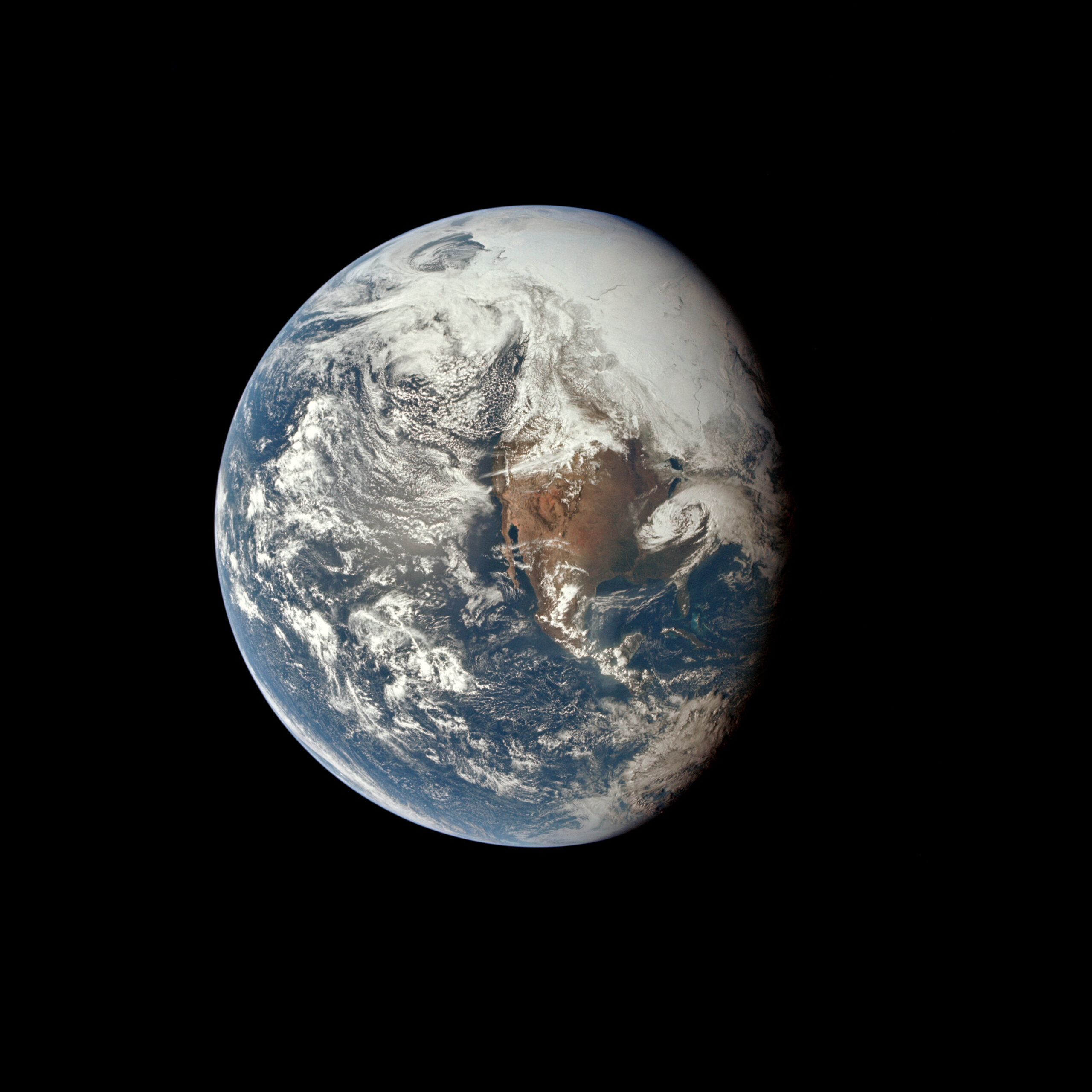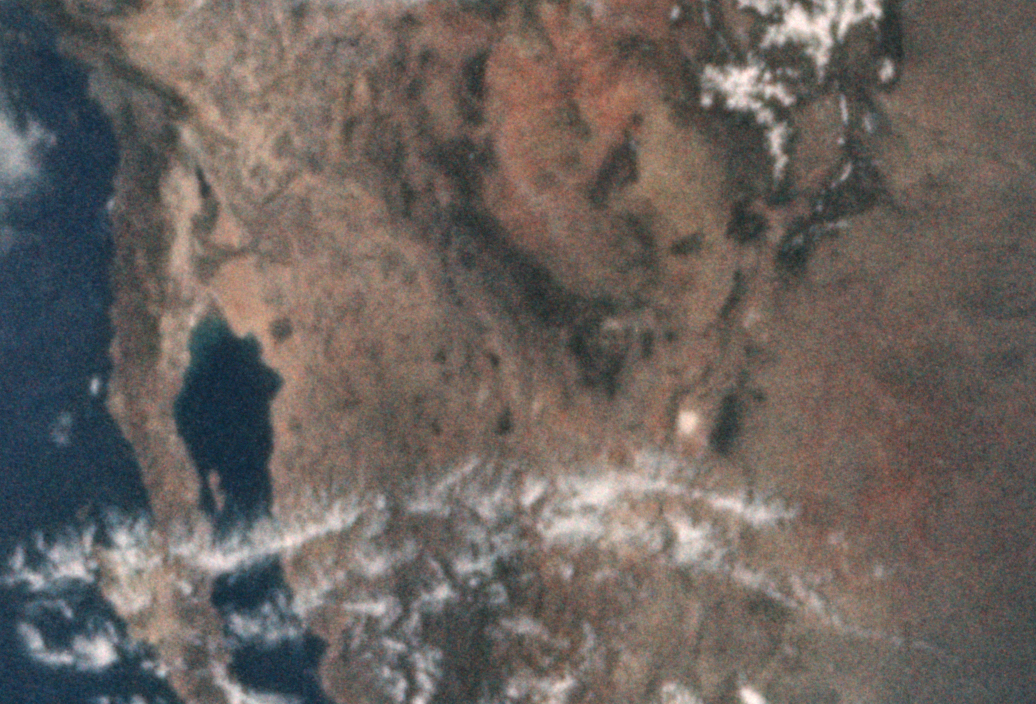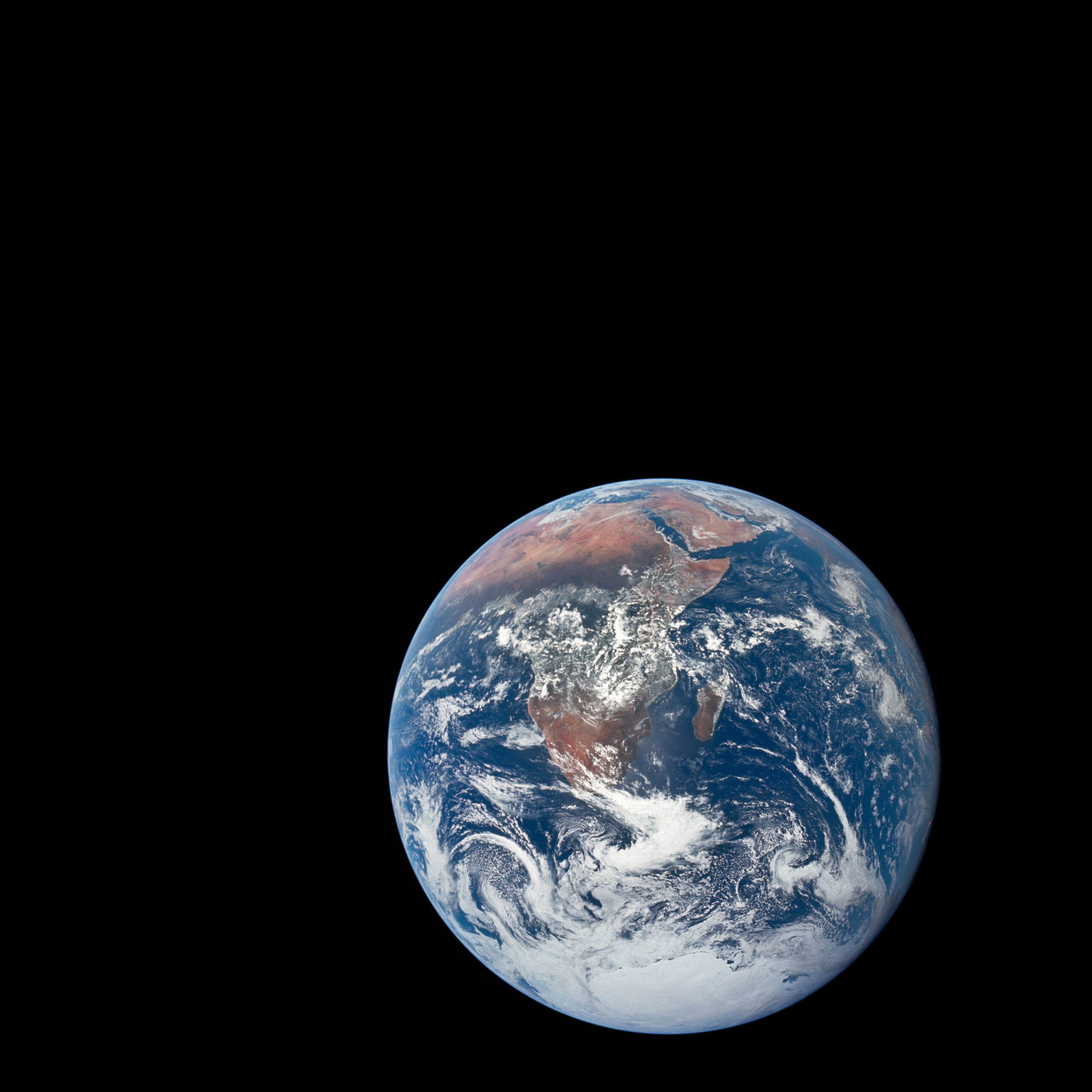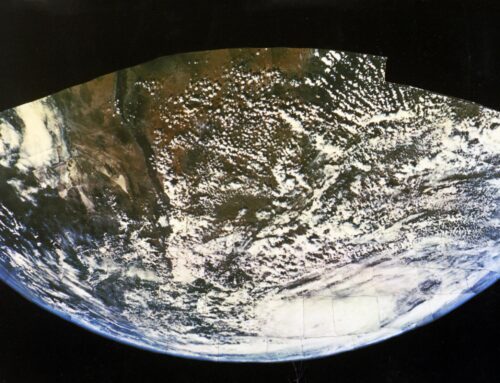Discovering Earth
 Earthrise from Apollo 8, AS08-14-2383. Image Credit: NASA/JSC/ASU/Apollospace
Earthrise from Apollo 8, AS08-14-2383. Image Credit: NASA/JSC/ASU/Apollospace
“We came all this way to explore the Moon, and the most important thing is that we discovered the Earth” – Bill Anders, Apollo 8, “Earthrise” photographer
Above, the first photograph of an Earthrise in black and white, and moments later, the first color photograph of Earthrise as seen with human eyes.
On December 21, 1968 humanity left the comforting confines of home on a journey to Earth’s nearest neighbor. On their way, the Apollo 8 astronauts came to see all that has ever been as a thumbnail in endless space. The first photograph of the whole Earth as seen by human beings appears below. Most of South America is visible at bottom center. North America (upper left) is mostly obscured by clouds, with Florida and Mexico visible. Upper right is western Africa.
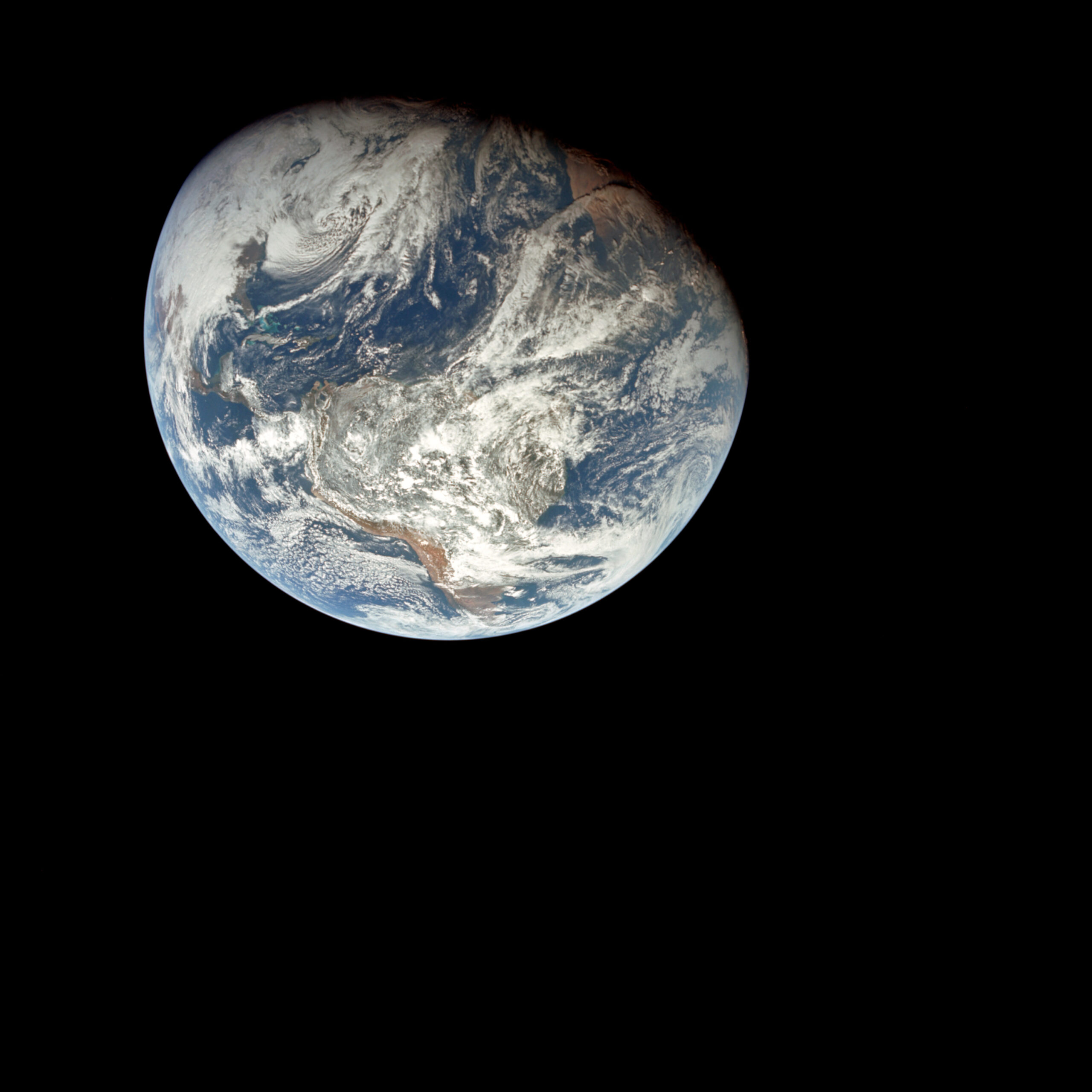 First whole Earth seen by humans, Apollo 8 AS08-16-2593. Image Credit NASA/JSC/ASU/Apollospace
First whole Earth seen by humans, Apollo 8 AS08-16-2593. Image Credit NASA/JSC/ASU/Apollospace
Apollo 12 astronaut, Alan Bean, called the Earth “a jewel in the heavens.” No rock could be more precious. All that ever was is down on that little planet. Every creature, every ancestor came from that and is there still. One being. Ever changing, evolving, alive. Living, breathing life. And life for the first time leaving her behind can finally see where we come from, and who and what we truly are.
I never tire of looking at images of the Earth. I find the perspective calming, and comforting. Inspiring and uplifting. Spiritual. Jim Lovell of Apollo 8 called the Earth “a grand oasis.” It is home in every sense that home can be.
Below is a short video montage of the Apollo 8 crew describing their impressions of the Earth and Moon.
One of my favorite Apollo Earth photographs, below, is from Apollo 16 with much of North America clearly visible under cloud free skies – from Florida to the Northwest Coast, and the Great Lakes through the central US into Mexico. What I like best is that tiny white dot sitting near the center of the image, White Sands in New Mexico, USA, from where the first photographs of Earth from space were taken, and from where I can find my home, following the Rio Grande River north to the Sandia Mountains. I like being able to find my way home from space.
In the closeup below, white sands is clearly visible as the white circle.
One of the most beautiful, and justifiably famous, photographs of the Earth is from Apollo 17. This photograph, often called “The Blue Marble” for the first time shows the whole Earth as a complete and glorious sphere. The photo was taken on December 7, 1972, from a distance of approximately 18,000 miles. Antartica is visible at the bottom as well as the whole of Africa and the Arabian Peninsula.
Indescribably beautiful, fragile, resilient, and enduring. Our Home. Everything. Wow.


